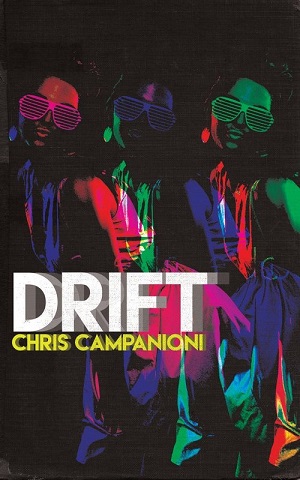 Drift, by Chris Campanioni
Drift, by Chris Campanioni
Review by Michael Browne
“I want to capture everything,” a character says in the opening pages of Chris Campanioni’s new novel Drift, echoing the very millennial compulsion to document everything, and mirroring the attitudes of the twenty-somethings that inhabit the 400-plus pages that follow. Written over the course of ten years, the book fits nicely into Campanioni’s output, sliding next to last year’s equally impressive, The Death of Art (C&R Press). Hard to categorize as ever, Campanioni has returned with more fractured narratives filled with an unlikely pack of auto-fictional models, college kids, Jersey Shore party-seekers, extroverts, and cynics, all seeking to document their existence by all means necessary. Channeling Bolaño’s 2666 formal structure, Chris Campanioni has crafted another terrific glimpse into our modern anxieties, and our compulsory need to “capture everything.”
Drift is composed of six sections, four of which are based on seasons of the year. Each section follows a variety of non-linear narratives. Mostly we follow a model named Chris Selden—presumably the auto-fictional Campanioni. The reader traces Selden through photoshoots in Palm Desert, trips to Brazil, romantic entanglements, and more. Selden, equal parts cynic and playboy—a la some character from Rules of Attraction or Glamorama era Ellis— believes that everyone born in 1985 is “doomed.” He also speaks at great length about resenting the artist’s insatiable need to observe:
The fact that I can’t look at someone, at anyone, without sizing them up, without writing them into the story. Every encounter in life viewed from above; a tracking shot from the camera eye of a cruising hawk. It wears on me.
Cameras constantly pace behind most of the proceedings in Drift, from photo shoots to coffee shops in NYC. Much of the narrative is described as if everything is being filmed, and the line dividing what is being recorded or not within the narrative becomes nebulous. Words like “tracking shot,” “scenes,” and “stagehand” are used in subtle ways intermittently throughout to elevate the feeling that everything is being captured, recorded.
Like The Death of Art, Drift captures aspects of the modern millennial zeitgeist perfectly. Characters constantly alternate between deciding to document the present moment or just experience it. Campanioni’s characters often crave the actual experience but oftentimes they find themselves living in a purely fabricated representation of experience. The world as simulacrum occupies big ideological spaces within Campanioni’s work. In a passage titled “This Must Be The Place” (one of the many Talking Heads references), the narrator reflects on the fallibility of memory:
Memory can change the shape of a room; it can change the color of eyes, hair, a name or a face. It is not a record, it is an interpretation. A representation of the actual experience. A fake.
Or take for example Selden’s experience as a model in Palm Desert. When time is running short and the crew are unable to shoot in neighboring Idyllwild in the mountains above the desert, the crew recreate the backdrop of Idyllwild on the computer.
Idyllwild was the greatest thing I’d never seen…tall pines, sweet-smelling cedars, legendary rocks…eventually they’ll stick my body somewhere among those pines…
Here the world of simulation has become more ideal, more desirable than the actual world, than actual experience. The main conflict to be found within Drift is the tug and pull between real experience and manufactured, surveilled experience.
The allusions to 80’s new wave and indie music abound through the pages of Drift. Chapters titled “Bizarre Love Triangle” and “Girls on Film” broadly work to highlight some of the themes within the text, but also seem to be calls to Campanioni’s musical literacy, if anything else. Twenty-somethings hop into cars where the stereo plays Talking Heads, and casual conversations are had in coffee shops about the legitimacy of genre names like “dream-pop” and “chill-wave.” In Drift, things are begging to be defined and made tangible, but in a world that feels like a production set, real meaning and the correlated experience are always out of reach.
Sections titled “Atrocity Exhibition” (I-V)—borrowed from the Joy Division song of the same name—fracture the narrative even further, providing little vignettes that confound, further exploding any semblance of narrative. This almost apocalyptic stylistic approach works in tandem with the apocalyptic tonal nature of the book. Not only are there end of the world parties—including heightened anxieties around the end of the Mayan calendar (2012)—but the book as a whole feels prophetic of a certain “end times” mentality.
Much like in his previous novel Death of Art, Campanioni wrestles with his public image and how it is represented online. In one section, we are privy to a long transcript of messages Campanioni—or his auto-fictional self Chris Selden—has received from admirers across social media. Inquiries range from requests to befriend Selden, to questions about his diet and exercise routine, while other inquiries prove to be more probing and vaguely problematic. This section works well to display perhaps the ramifications of a public life like Selden’s that is readily available for consumption, for commodification.
Like most of Campanioni’s work, his new novel works best when it’s ideas are constantly in motion from one page to the next. Drift could not be a more apt title for a book whose ideas drift from page to page, appearing like a revelation and then vanishing just as quickly. Shifting from autofiction, to memoir, to metafiction, and realism, sometimes all within the course of a few pages, Drift is a book that begs us to put it back together, to frame our own narratives, and to follow its often transcendent insights in our own lives.
Drift is available now via King Shot Press.

 When People Die by Thomas Moore
When People Die by Thomas Moore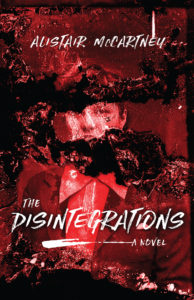 Alistair McCartney is a Los Angeles based author of two books, and most recently of The Disintegrations—a book that tackles the subject of death in all its abundant mystery and vague lore. The book is very much a Los Angeles book, as it sees its narrator find comfort and a narrative home base at Holy Cross Cemetery in Culver City; the final resting place of many of Hollywood’s most notable stars. The book often shifts from auto-fiction, to fiction and memoir, as McCartney takes us on a melancholic stroll of the afterlife and all the detritus and traces it has left behind in his own life. We recently talked to him about the book’s connection to music, his early influences, and LA as inspiration.
Alistair McCartney is a Los Angeles based author of two books, and most recently of The Disintegrations—a book that tackles the subject of death in all its abundant mystery and vague lore. The book is very much a Los Angeles book, as it sees its narrator find comfort and a narrative home base at Holy Cross Cemetery in Culver City; the final resting place of many of Hollywood’s most notable stars. The book often shifts from auto-fiction, to fiction and memoir, as McCartney takes us on a melancholic stroll of the afterlife and all the detritus and traces it has left behind in his own life. We recently talked to him about the book’s connection to music, his early influences, and LA as inspiration.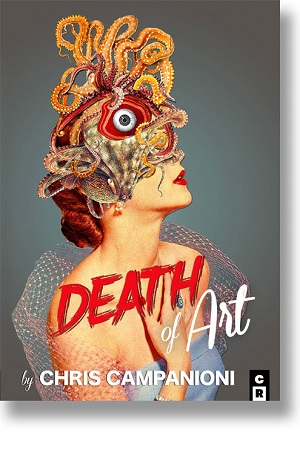 Novel by Chris Campanioni
Novel by Chris Campanioni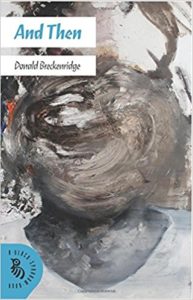 Donald Breckenridge is the author of four novels and the editor of two fiction anthologies. He has also served as the fiction editor of the Brooklyn Rail for the last sixteen years, and is the co-founder and co-editor of InTranslation, and the managing editor of Red Dust Books. His most recent work, And Then (
Donald Breckenridge is the author of four novels and the editor of two fiction anthologies. He has also served as the fiction editor of the Brooklyn Rail for the last sixteen years, and is the co-founder and co-editor of InTranslation, and the managing editor of Red Dust Books. His most recent work, And Then (
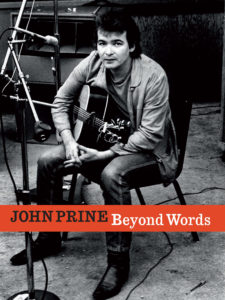
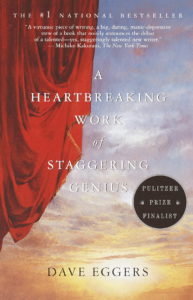

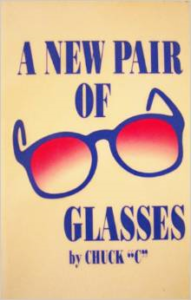
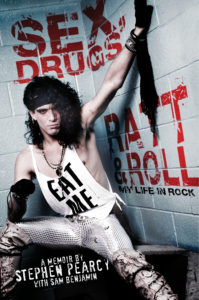


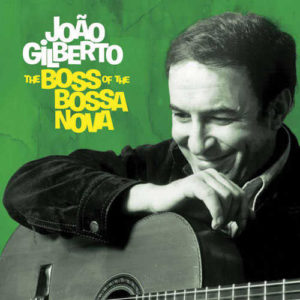

 Thomas Moore is a UK based writer whose most recent novel In Their Arms (Rebel Satori Press), follows the spiraling life of a queer art critic as he numbly navigates a life of cruising apps and locales. In Their Arms dabbles wholeheartedly in the kind of erotic and depraved narratives that feature despairing males, made notorious by writers like Dennis Cooper. In Their Arms evokes a vague horror and routinely works to dull the reader’s senses. Stylistically, the book also features a detritus of pop music and cultural allusions. In our next installment of writers talking about the music that has played a part in their creative lives, we talked to Moore about the role music plays in his writing and the importance of tone and style over narrative.
Thomas Moore is a UK based writer whose most recent novel In Their Arms (Rebel Satori Press), follows the spiraling life of a queer art critic as he numbly navigates a life of cruising apps and locales. In Their Arms dabbles wholeheartedly in the kind of erotic and depraved narratives that feature despairing males, made notorious by writers like Dennis Cooper. In Their Arms evokes a vague horror and routinely works to dull the reader’s senses. Stylistically, the book also features a detritus of pop music and cultural allusions. In our next installment of writers talking about the music that has played a part in their creative lives, we talked to Moore about the role music plays in his writing and the importance of tone and style over narrative.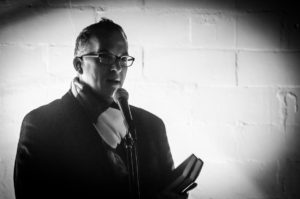 Angel City Review is proud to present the first installment of an interview series that will feature exclusive interviews with writers and musicians about the literature and music that moves them. First up we have Jim Ruland, author of the award winning novel
Angel City Review is proud to present the first installment of an interview series that will feature exclusive interviews with writers and musicians about the literature and music that moves them. First up we have Jim Ruland, author of the award winning novel  Sonata in K by Karen An-Hwei Lee
Sonata in K by Karen An-Hwei Lee Baloney by Maxime Raymond Bock
Baloney by Maxime Raymond Bock